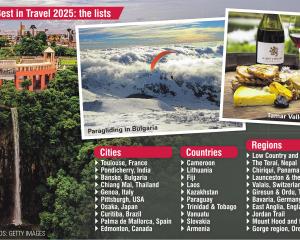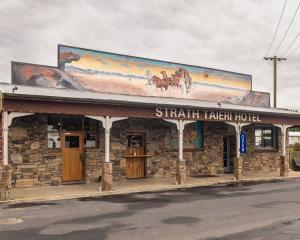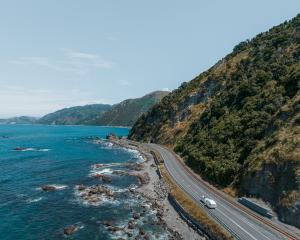
Day 1: the drive to Thun, setting up camp, and discovering the area.
My trip to Switzerland started at Frankfurt Airport, where the summer heat and jet lag set in. After picking up a camper and cranking up the AC, I felt more awake and ready to go. The drive to Gwatt took about four and a-half hours, with a few breaks for lunch and stretching along the way. When you cross the border into Switzerland, the hills start to unfold almost immediately, and within 20 or 30 minutes, the awe sets in as you’re surrounded by stunning, expansive views in every direction.
Gwatt, Switzerland, turned out to be a peaceful spot to settle in. The TCS Camping site served as a good base for exploring the area, surrounded by the Alps and warm glacier waters. The air felt cosy but not overly humid and at night, thunderstorms rolled through, bringing a bit of excitement with lots of lightning but almost no rain.
The campsite itself was well-equipped with modern amenities. It also had an inviting restaurant and cafe on site, making it easy to grab a meal. Whether you’re in a tent, a caravan, or renting a VIP hut, everything you need is within reach, including free Wi-Fi.
For families, there’s a playground and a swimming area for smaller children but if you’re into outdoor activities such as hiking, cycling and water sports, they are all accessible directly from the site. The nearby town of Thun is also accessible with a bus stop right outside the campsite. Thun itself offers a mix of cultural experiences, dining and shopping.
Whether you want to relax or explore, the TCS Camping site in Gwatt is a great starting point for your Swiss adventure.
Day 2: Exploring Thun and its old town centre.
 The charming town of Thun.
The charming town of Thun.

On the second day of my journey, I explored the charming town of Thun, just a short bus ride from Gwatt. The free transport provided by the tourism association (if staying at approved lake Thun tourism site or hotel) made the trip even more enjoyable.
Thun’s old town immediately captivated me with its character and charm. Thun is a place where history has been preserved with care. The town is rich with natural beauty, highlighted by the turquoise waters of the Aare River, which flows gracefully through the town.
I spent most of my day wandering through cobbled streets lined with charming shops and cosy cafes. The area has a well-preserved schloss, (castle) built between 1180-90, and a church, built between 1330-1496, standing tall among the landscape. Each of these historical buildings has its own story to tell, adding to the town’s sense of timelessness.
After a morning of exploration, I took a well-needed break at Ristorante Pizzeria al Ponte, a lovely Italian restaurant situated by the water’s edge. The setting was perfect for a relaxing drink under the shade of a magnificent willow tree. The view of the Aare River made for a serene dining experience, allowing me to unwind and soak in the peaceful atmosphere. Four official languages are spoken in Switzerland: German, French, Italian and a now dying language called Romansh.
Thun’s blend of natural beauty, historical significance and vibrant personality makes it a true gem and worth taking a day to explore fully.

Day 3: The town of Stans and the peak of the Stanserhorn.
Travelling from Thun to Stans by train is a journey through some of Switzerland’s most picturesque landscapes. The route takes you along the shores of Lake Thun, offering stunning views of the surrounding mountains and quaint villages. As you leave the lake behind, the train winds through the charming Swiss countryside, passing through Lucerne before arriving in Stans, a delightful town nestled at the foot of the Stanserhorn mountain.
From Stans, the adventure continued with a ride first on the historic funicular to base 1 (which dates back to 1893), which transitions into the unique Cabrio cable car (gondola), the world’s first double-decker, open-top cable car. As you ascend, the panoramic views begin to unfold with the lush green valleys, and distant peaks grow ever more magnificent. Reaching the peak of the Stanserhorn at 1898m, you’re greeted by a lovely restaurant and a 360-degree panorama deck that offers views like no other. On a clear day, you can see as far as the Black Forest in Germany and the Jura Mountains in France.
For those seeking an even greater challenge and a closer connection with nature, hiking up the Stanserhorn is an option — if you’re adventurous enough. The trail is demanding, but the reward is the ultimate sense of accomplishment and unparalleled views as you climb through forests and meadows, eventually reaching the summit. Whether you choose to hike or take the Cabrio, the experience is both breathtaking and serene, providing a perfect blend of nature’s grandeur and Swiss engineering. It’s a must-do for anyone seeking an unforgettable Swiss Alps adventure.

Day 4: Reaching the tip of Europe.
Travelling up to the Jungfrau is an adventure that combines breathtaking landscapes with unexpected twists. The journey began with a train ride from Wilderswil to Zweilutschinen, but due to severe thunderstorms the night before, parts of the connecting route from Zweilutschinen to Grindelwald were disrupted, requiring a bus detour which was especially arranged for travellers going to the Jungfrau. This detour added some unpredictability to the trip, but also a sense of adventure. After reaching the cableway terminal, I ascended to the first base where stunning views were getting me excited. From there, the journey continued on the Jungfrau Railway, which burrows through a man-made tunnel within the mountain, winding its way to the peak.
Upon reaching the top, I was met with a thick layer of clouds that obscured the panoramic views I had hoped to see on the observatory deck. There was a brief window where the clouds parted, offering a glimpse of the surroundings, but it was far from the clear day I had imagined. One surprising thing I encountered was a flock of mountain crows, one of the highest-nesting birds in the world, which get fed well by the many tourists.
The Jungfrau experience did make me realise the importance of booking tickets only when you’re in the area, as the weather at the Jungfrau is incredibly unpredictable. The tickets are also not cheap, so it’s worth waiting for a day with good visibility to truly appreciate the majesty of the mountain. Despite the clouds, the journey there, going through the ice palace, and taking the discovery tour through the tunnels in the mountain itself made it a still unforgettable adventure worth doing.
Day 5: A cruisy day in Spiez.
Starting off day 5, I woke up late and took the bus to Spiez, where I met up with a Swiss friend for lunch. We afterwards hopped on the charming little Spiez train, which was a delightful way to explore the town and get a lovely view of the geometric Niesen mountain. My friend then showed me around the town personally, taking me to two beautiful architectural spots — both churches in Spiez — where I could finally get my drone up in the air. The first church was called the reformed church. And the second church was Church Faulensee. The views of Spiez and Lake Thun were beautiful and peaceful, and I captured some incredible videos there.
We ended the day at my friend’s place with a classic Swiss dinner, which included delicious rosti, those iconic Swiss grated and fried potatoes. It was the perfect end to a chilled, refreshing day. I arrived back at the camp feeling content and recharged. This relaxing day off was just what I needed to unwind and recharge my battery for another full day tomorrow.
Day 6: The St Beatus waterfall and caves.
 The historic St. Beatus waterfall and caves.
The historic St. Beatus waterfall and caves.

After catching an early bus at 8am to Thun, I boarded the motor boat Beatus, which travelled from stop to stop across the calm lake. The journey was peaceful and super smooth, and I arrived at Beatenbucht within an hour and a-half. A brief bus connection winding along a cliff side delivered me to the front door of the waterfall. Looking up, the cliffs were impressive, with a main waterfall spilling down the side. The soft mist and overcast skies added a dramatic touch to the landscape. It was the perfect setting to explore. The cave system itself is over 15,000 years old and served as shelter for Stone Age communities.
The caves were extensive, much longer than I had anticipated. The winding tunnels and underground chambers seemed to go on forever and took a fair bit of time and energy, so I would recommend eating a meal before entering the caves. They have a nice restaurant, and some light snacks outside the cave entrance. Exploring the caves early was great as there weren’t many people around to begin with, allowing me to enjoy the experience. Once I began the return, I noticed how many more people were coming in and how crowded it became.
Overall, the St Beatus caves offer a unique cloudy or rainy-day experience, combining natural beauty with history and a sense of exploration, making it well worth the trip on a rainy or sunny day.
Day 7: Above the clouds at the Stockhorn summit.

The summit was breathtaking — floating above the clouds, with the snowy mountain peaks piercing through the clouds. The views were simply spectacular, the kind that stay with you forever. After soaking in the scenery, I descended to the halfway point and took a peaceful walk along the Hinterstockensee, following an easy mountain trail to a lovely placed bench where I captured a self-portrait to gain a sense of perspective among the grand scenery.

— Johannes Guldner is a Dunedin School of Art, L6 Diploma in Photography student












